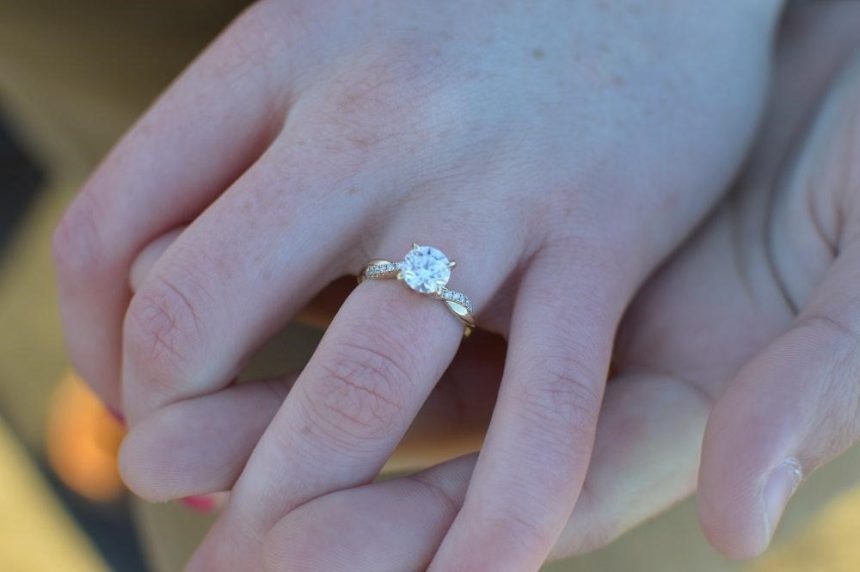Recently, lab-diamond rings have gained much popularity. But it’s quite early to favor the fame that these rings have received. The masses seem to be divided on their opinions about the viability and practicality of this idea.
The most common question raised is; how can they be as good as original diamonds?
We’ve crafted this guide to answer this very concern. And along with that, we’ll be clearing out some more common myths and rumors that may be depriving you of this cost-friendly engagement ring alternate. Plus, you’ll find a detailed buying guide for lab diamond rings at the end of this post.
What is a lab diamond?
To acquire clarity about the situation, you need to understand what we mean when we say a lab diamond.
- Are we referring to diamonds mined from the Earth but polished and processed in labs? No.
- Are we referring to diamonds created in laboratories from scratch? Yes.
Technically, lab-created diamonds incorporate a bit of the original diamond. But they are not entirely composed of the gemstones that originate from under the Earth’s surface.
The process begins with a thin slice of real diamond or previously created lab diamond. Techniques like Chemical Vapor Deposition (CVD) and High Pressure and High Temperature are used to replicate the carbon bonding and structuring in the thin slice, such that it forms a stone. Overall, the process looks like that of 3D printing.
Plus, the process only takes about 1-2 weeks, which is quite too less compared to billions of years taken by an original diamond. Once these stones are formed, they’re cut, polished, and processed for different pieces of jewelry (especially rings).
Some Myths about Lab-Created Diamonds
#1. Lab-created diamonds are damaging the environment.
No! That’s a huge misconception. The entire idea behind lab-created diamonds is to cut down costs for the consumers and save the Earth from further damage. According to statistics, 538.5 million joules of energy get consumed to produce or mine only one carat of diamond. On the contrary, it takes only about 250 million joules of energy to produce lab diamonds.
#2. Mined diamonds are much rarer than lab-grown diamonds.
That’s incorrect. Diamond is a rarity in itself. Both mined and lab-grown diamonds are rare. And that’s because lab-grown diamonds are produced from seeds of original diamonds too.
#3. Lab-grown diamonds do not retain their value with time.
Lab-grown diamonds are equally sturdy, shiny, and aesthetic as original diamonds. And hence, they retain their looks and value exactly as you purchased them. It is true lab-grown diamonds are cheaper than original diamonds. So, you cannot expect your lab diamond ring to resell at the price of the original diamond. But it will give you back the money you invested in it, should you decide to resell it.
How to buy the best lab-diamond rings?
Buying lab-diamond rings is more or less the same as shopping for original diamonds. You’ll have to go through the same process and check for the same things.
Hunt a Reliable Brand
The first thing that you need to look for is a reliable brand. Currently, there are several big names out there. Some of them are operating virtually, some are operating physically, and some are operating in both mediums.
We recommend the following lab diamond ring brands:
- James Allen
- Diamond Nexus
- Clean Origin
- Blue Nile
There are more names out there. Just Google best lab diamond rings near me, and you’ll find them.
But do not trust the search results only. You’ll need to do some work too.
Using professional photography is highly recommended when selling online, as it will give the brand a decent boost in authority.
Once you’ve chosen a brand that appeals to you, go through its clientele’s review. Browse feedback from customers, and you’ll know whether you’re headed in the right direction or not. For example, if you’ve settled for Diamond Nexus, look up Diamond Nexus reviews. You’ll come across customer feedback on their website, product pages, and forums or discover comprehensive blog posts like this one about Diamond Nexus review. Browse through all of this material before you begin looking for a design.
If you’re opting for a physical vendor, pay a couple of visits to the shop before picking the design. If possible, connect with its previous customers online or IRL. You should also check whether the vendor is legally permitted to sell and manufacture diamonds or not.
Check for the 4 C’s
Next, evaluate the four C’s to hunt your perfect lab diamond ring:
- Cut: The more the facets of the diamond, the more it will sparkle. Some famous diamond cuts include hybrid pear, rectangular emerald, and round brilliant.
- Clarity: It refers to the inclusions inside a diamond or blemishes on the surface of a diamond. The clearer it is, the better it is.
- Color: Diamonds come in a variety of colors, including red, orange, yellow, black, etc. But colorless diamonds are the most popular.
- Carat: One carat of diamond weighs 200 milligrams. The price increases with carat. So, the greater the number of carats, the greater the value.
Final Words
Once you’ve evaluated the brand, its reputation, and the quality of diamonds they offer, you’re good to begin looking for a design of choice. You can browse through the available ring designs. Or, if you wish to stand out, you can request a custom engagement ring design (P.S. Yes! It’s okay to use your Pinterest ideas!).















